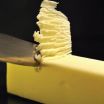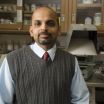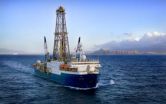The new asteroid sample-return mission is called OSIRIS-REx, an acronym standing for Origins, Spectral Interpretation, Resource Identification, Security, and Regolith EXplorer. The Principal Investigator for the mission is Michael Drake of the University of Arizona in Tucson, and the mission is part of NASA's New Frontiers program.
The mission's goals are to return a sample of rocks, soil, and dust from a pristine carbonaceous asteroid, map the asteroid's global properties down to submillimeter scales, characterize this class of asteroid for comparison with meteorites, and measure a subtle effect of sunlight that can alter the orbits of asteroids.
"The OSIRIS-REx mission is an important milestone for planetary science in the state of Arizona," says Kip Hodges, director of ASU's School of Earth and Space Exploration. "I am very excited at the prospects of building closer research collaborations with our friends and colleagues at the University of Arizona."
The instrument to be built at ASU is the OSIRIS-REx Thermal Emission Spectrometer, or OTES for short. It will be the first complex electro-optical instrument for spaceflight to be built at ASU.
A first for ASU
"In the past, each of the five instruments we've built for NASA were built at an aerospace company in California," says Philip Christensen, Instrument Scientist for OTES. He is Regents' Professor of Geological Sciences in the School of Earth and Space Exploration, part of the College of Liberal Arts and Sciences. "For the first time, a piece of complicated space hardware will be built on the ASU campus."
Christensen adds, "This is something we've been working toward for 15 years. It's is a major step forward for ASU — I can count on one hand the number of universities that can do this."
Greg Mehall is Project Engineer for OTES at ASU and has overseen the technical development of several previous ASU flight instruments. "We've worked hard over the past few years to create the infrastructure at ASU necessary to support such an endeavor," he says. "We recently developed two prototype flight instruments based on the Mars rover infrared spectrometers. They're representative prototypes for OTES."
The instrument also fits into a bigger picture at ASU. Hodges explains, "OTES demonstrates that SESE is now ready not just to operate instruments in space from the ASU campus, but to fabricate space-ready hardware in-house." In many ways, he says, "OTES is proof of the promise of SESE, an academic unit designed to integrate science and engineering research and education. We are very fortunate to work at a university that supports such a groundbreaking enterprise."
OTES will be built in cleanroom facilities in the new Interdisciplinary Science and Technology Building (ISTB) 4, currently being constructed on the Tempe campus. "ISTB-4 is a remarkable building that will not only support advanced research by SESE and other academic and research units, but will also serve as a public showcase for scientific exploration," Hodges notes. "The OTES fabrication facility will be on the first floor of ISTB-4, in space designed for public viewing through high-bay windows. It will be fantastic to be able to use this state-of-the-art laboratory as a teaching tool."
Rendezvous in space
If all goes as planned, OSIRIS-REx will launch in September 2016 and rendezvous with asteroid 1999 RQ36 in November 2019. It will spend up to 15 months surveying the asteroid's mineralogy with OTES and another spectrometer working at shorter visible and infrared wavelengths. A suite of three visible-light cameras and a laser altimeter will complete the picture of the asteroid.
"The infrared is great for identifying minerals," says Christensen. "OTES will map the composition of the asteroid in order to identify the best region to sample."
Mission scientists will then select a target area. The spacecraft will approach the asteroid, touch it very briefly, and collect at least 60 grams (2 ounces) of dust, soil, and rubble from its surface. With sample collection completed, OSIRIS-REx will cruise back to Earth and use a separable return capsule to deliver the sample to a landing site in Utah in September 2023. After flying past Earth, the spacecraft should be available to survey other asteroids, although it will not be able to collect samples from them.
Little push here, little nudge there
Asteroid 1999 RQ36 has an unmemorable designation, but it's a space rock scientists want to keep a close eye on. With an orbit that brings it inside Earth's orbit, it is the most accessible asteroid rich in organic materials from the early solar system. RQ36 is about 575 meters (1,900 feet) wide, roughly spherical, and spins once every 4.3 hours. Reflecting only three percent of the sunlight falling on it, the asteroid is about as dark as a charcoal briquette.
Many asteroids have similar properties; what gives RQ36 special interest is that it comes within 450,000 kilometers (280,000 miles) of Earth. It's also the asteroid with the highest known probability of hitting Earth — there's about one chance in 1,800 for an impact in the year 2170.
As part of its mission goals, OSIRIS-REx will seek to measure the Yarkovsky effect, a weak but steady thrust produced by sunlight when it falls on a spinning object. The effect arises from the fact that, all else being equal, sunlit ground is warmer in the afternoon than the same ground is in the morning, because sunlight has had longer to heat it.
This means that the afternoon side of a rotating object in space radiates more heat than the morning side, thus producing an extremely small thrust. For objects as massive as planets, the effect is negligible. But for small bodies like RQ36 the effect could change its orbit. OSIRIS-REx will help scientists assess how fast RQ36's orbit is changing and gather information useful for future generations, which may have to take action to deflect the asteroid.
New frontiers
For his part, Christensen is enjoying the change in scientific targets. "After spending most of my career studying Mars, it's going to be exciting and challenging for me and my research group to focus our attention to the origin and history of asteroids."
OSIRIS-REx is the third mission chosen in NASA's New Frontiers program for unmanned planetary missions. Its budget (not counting lauch vehicle) is approximately $800 million, of which the OTES budget is about $17 million.
OSIRIS-REx is managed by NASA's Goddard Space Flight Center (Greenbelt, Maryland) and the University of Arizona (Tucson). The University of Arizona is also responsible for coordinating the science team, science operations, data archiving, education and public outreach, and building the visible-light camera suite. NASA Goddard is building the visible near-infrared spectrometer. Lockheed Martin Space Systems (Littleton, Colorado) is building the spacecraft bus, sampling system, and sample return capsule, plus handling mission operations. The Canadian Space Agency (Ottawa, Ontario) is building the laser altimeter, KinetX is providing the spacecraft navigation, and NASA's Johnson Space Center (Houston, Texas) will curate the samples.
###
END



